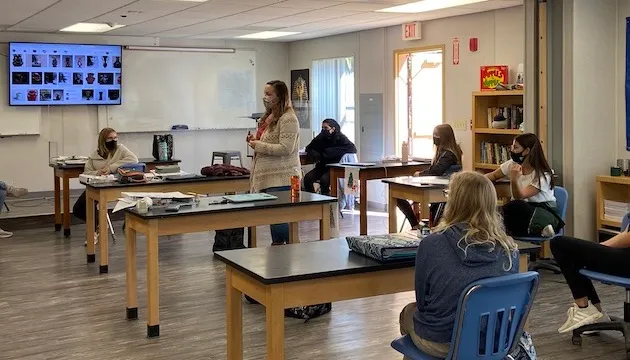Activities to Teach Students to Identify Materials in Objects

The identification of materials is a fundamental skill that every student should learn. It is an important facet of science and engineering, as well as practical skills in everyday life, such as recognizing the best type of packaging for a particular item, or how to recycle or dispose of waste materials properly.
Here are some activities to teach students to identify materials in objects:
1. The Mystery Box.
Fill a box with a wide range of materials like sand, water, paper, plastics, metals, rubber, etc. Use opaque boxes so that students cannot see the contents of the box. Then, ask students to reach in and feel each item and try to identify the materials used to make it. Through this exercise, students will learn to distinguish the physical properties that each material has, such as texture, density, and flexibility.
2. Material Scavenger Hunt.
This is an outdoor activity where students work in small groups to find objects that have been made from specific materials such as wood, plastic, metal, or rubber. They can examine the objects by looking at logos, labels, and markings or by using their senses. Through this activity, students will develop awareness of the materials that they encounter in their daily lives and gain an understanding of the different properties of materials.
3. DIY Material Testing.
Students can create small samples of different types of materials such as wood, paper, plastic, and metal. They can learn about the properties of each material by testing them for strength, flexibility, and reaction to heat or cold. For example, they can see which materials bend or snap under pressure or which materials are more durable. Through this exercise, students will gain an understanding of how different materials behave under different conditions.
4. Sorting Game.
Provide a collection of objects from everyday life and ask students to sort the items based on the materials that the objects are made of. This exercise enables students to develop visual analysis skills while learning the various types of materials used in household items, electronic devices, and structures.
5. Recycling Relay.
Divide students into teams and provide them with a range of items, each made from a different material. Ask them to sort the items into recycling bins based on the material they are made of. Students can then explain why they sorted a particular item into a particular bin. This activity teaches students about the recycling process, and they will learn how to identify different materials, which can be recycled.
In conclusion, teaching students to identify materials in objects is an essential aspect of science and engineering. These activities help students to develop the skills required to identify materials, their properties, and their proper usage. By participating in these activities, students will become more aware of the importance of these skills both in real-world applications and in their everyday lives.


